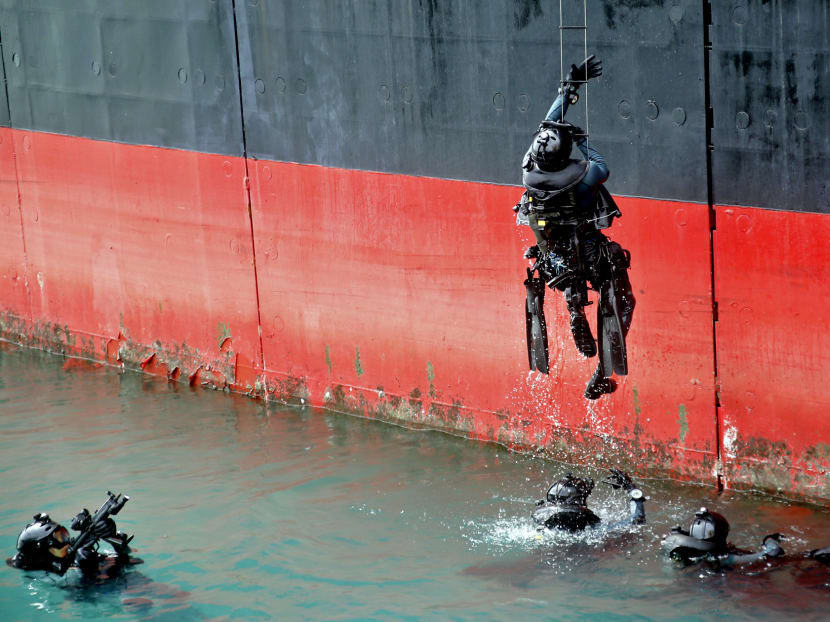S’pore to build up shoreline defence with new assets
SINGAPORE — More than 10,000 suspicious vessels were stopped from breaching Singapore’s waters last year, up from the more than 7,000 vessels intercepted in 2014, statistics provided by the Police Coast Guard (PCG) show.
SINGAPORE — More than 10,000 suspicious vessels were stopped from breaching Singapore’s waters last year, up from the more than 7,000 vessels intercepted in 2014, statistics provided by the Police Coast Guard (PCG) show.
The number of individuals nabbed for trying to enter or leave Singapore illegally by sea dropped from 46 to 25, though.
One of those arrested is among the 27 Bangladeshis detained here under the Internal Security Act for contemplating armed jihad overseas as well as in their homeland. He was sentenced to 12 weeks’ jail for attempting to leave Singapore illegally, after learning about the arrests of his fellow group members. He has since been
deported.
Home Affairs Minister K Shanmugam, who observed the PCG’s counterterrorism and maritime security measures on Friday (March 18) at its headquarters at Brani Base, said that the unit plays an important role in combating terror threats.
Noting that terrorists can plan attacks just outside the country before charging in, the minister said one possible entry point will be the seas, similar to the 2008 Mumbai attacks.
So, as part of its continuing efforts to strengthen Singapore’s shoreline defence, the PCG is testing a raft of gizmos that will beef up its capabilities to detect threats.
Among these, electro-optic sensors that give instant 360-degree views will be deployed from 2018, complementing the current pan-tilt-zoom electro-optic sensors. The new sensors come with video analytics capabilities that can alert operators to suspicious movements sighted in the waters.
Officers can then use the current sensors to zoom in on the suspicious activity without losing sight of the entire field of operations.
By 2019, unmanned aerial vehicles that are tethered to the decks of some of its patrol craft will be deployed, allowing surveillance from the skies — up to a height of 50m — in cluttered waters.
Having the aerial coverage will help in, say, a ship hijacking situation.
Closer in the pipeline are trials starting at the end of this year of unmanned surface vessels that are equipped with surveillance systems, search lights and loud-hailers.
These 9m-long vessels, which will be tested along the Johor Straits and in the southern waters, can be used by officers in the command centre to engage intruding vessels while other PCG assets are deployed to deal with the situation.
High-powered microwaves that can kill the engines of intruding vessels instantaneously, minimising the chances of unfriendly vessels breaching Singapore’s shorelines, are also slated to undergo a trial run from the first half of next year.
During his visit on Friday, Mr Shanmugam, who is also Law Minister, observed an exercise simulating a ship-hijacking on Friday involving officers from the Special Tactics and Rescue unit and the PCG’s elite Special Task Squadron.
He also observed a demonstration of two new PCG vessels to deal with high-speed hostile threats — the Patrol Interdiction Boats and the Second Generation PK Class High-Speed Interceptors commissioned last July.









